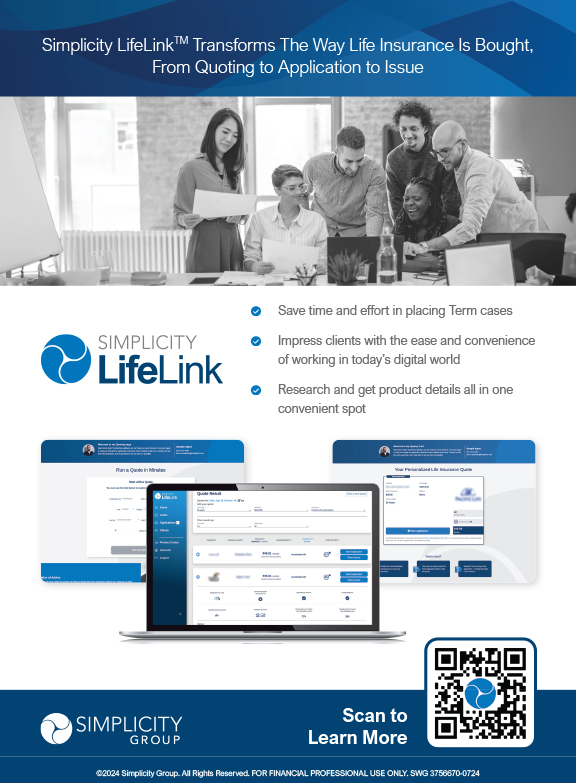A consumer-directed health plan (CDHP) doesn’t necessarily mean a high-deductible health plan (HDHP), but frequently that’s where a CDHP starts. Once the employer is sold, it’s time to start employee education. Unfortunately, employees have misunderstandings about HDHPs, and it’s time to clear them up.
Agents and brokers work with employers to help them provide the best products for their employees. My August 2011 column discussed goal setting with employers. With an objective of keeping health care costs reasonable, an HDHP can help both the employer and the employee afford health care benefits.
Once the employer has made the decision to move to a higher-deductible insurance product, the employee education process begins.
Make sure employee have all the facts they need to make an informed decision. They need details about each health care plan being offered, detailed medical expense history for each family member and a worksheet for comparing their out-of-pocket costs for the various plans. I’ll go through the considerations for an employee worksheet a little later in this article.
Your goal is to break through the myths and get rid of common objections like, “I don’t think I can afford that deductible,” or “I feel like this will be more expensive if I get sick.” You have to help employees make an educated, rather than emotional, decision—one based on real numbers.
Summary of Employee Benefits Plans
A summary of benefits is an outline provided to employees prior to open enrollment. It explains each benefit being offered and discusses things like deductibles, co-payments, coinsurance, wellness benefits and prescription drug coverage for each insurance product. Once employees read their open enrollment summary of benefit descriptions and make a side-by-side comparison, their answer for health care coverage is typically clear.
Medical Expense History
Start with the facts. Have participants write down the expenses they incurred in the last 12 months. If they can’t remember every prescription and doctor’s office visit, participants can get this information from their insurance carrier’s website. Have them download the previous year’s costs for each family member, because personal history is important when factoring in individual and family deductibles. Table 1 is an example of what they might see.
Special note should be made of the “agreed pricing” column in a client’s personal health care reimbursement history. First, this column may have different names depending on the carrier. Second, this is the price a participant pays for services and prescriptions in an HDHP with no co-payments. To compare insurance plans, an employee should ordinarily use the “agreed pricing” in lieu of co-payment amounts in calculations for the HDHP.
Be sure employees compare apples to apples. For instance, some non-grandfathered plans provide wellness benefits. The deductible is waived and the plan pays 100 percent for routine physical exams, immunizations, hearing and eye exams, and preventive health care services. A doctor’s office visit last year that required a co-payment may be free this year due to mandated coverage under the Affordable Care Act.
Comparison Worksheet
Providing an employee with a tool to organize the information that needs to be collected in order to compare plans will be crucial. It should have headings similar to the following bullet points in order to include all the pertinent items for comparison.
• Premiums. Just the employee portion. This is where you might see a huge difference in out-of-pocket expenses. Let’s say that family coverage is $450 for the low deductible and $170 for the HDHP per month. By switching to the high deductible, a participant would start out with a $3,360 savings ($450 minus $170 equals $280 per month times 12 months).
• Prescriptions. To find out the full price of current prescriptions, employees need to check out the “agreed pricing” amount on their explanation of benefits (EOB) or carrier website.
• Mail order prescriptions. Mail orders for prescriptions that require a co-payment may be less expensive than buying them from a local pharmacy or drug store. Check out some retailers that offer special four-dollar prescription co-pays, regardless of insurance plan. It could be that certain common medications could be even less expensive.
• Over-the-counter medications. Recurring over-the-counter medications should be noted. Although not paid through insurance, participants need this information to determine their contributions to either a flexible spending account (FSA) or a health savings account (HSA). Remember, as of January 1, 2011, a prescription is required for OTC drugs and medicines in order to pay for these items through an FSA or an HSA.
• Doctor’s office visits. Separate wellness from illness-related visits. Wellness visits may be provided at no cost to participants from an HDHP or under other plans due to mandated coverage under the Affordable Care Act.
• Network pricing. Even with a higher-deductible plan, the claims still go through the carrier for pricing. Be sure to point out the “agreed pricing” column in the download from their current health care provider. This is each participant’s responsibility.
• Deductible. Note that if family members are covered, the rules for HSA-compatible HDHPs require that the entire family deductible be satisfied before coverage kicks in. That may not be the case for a high-deductible plan that is not paired with a health savings account.
• Maximum out-of-pocket. Participants do not want surprises here. Make sure they know the maximum out-of-pocket amount for each plan and point out that some policies do not count the deductible toward the maximum out-of-pocket limits.
• Total it up and compare. With all the numbers in place, employees will have concrete facts to help them in their decision on a health care product.
• Encourage participation in an HSA or FSA, as applicable. Provide a benefit comparison (see Table) for easy distinctions between HSAs and FSAs.
Making the CDHP Complete
When helping employers build a plan that is best for them and their employees, the CDHP is not complete without a choice of “side account” benefits. An FSA or HSA will enable employees to pay for out-of-pocket medical expenses with pre-tax dollars.
Employees may have questions about the differences between an HSA and an FSA. They both pay for out-of-pocket medical expenses on a pre-tax basis. Some concerns employees have are the differences each benefit provides as to the availability of funds or access to their account at a later date. This table may help them make an educated assessment.
Decision Time
Regardless of what the numbers support, employees have personal reasons for their choices. Some employees prefer to enroll in an FSA rather than an HSA, even if they enroll in a qualified HDHP. They know that by participating in an FSA their expenses will be reimbursed in full by their employer at the beginning of the plan year, regardless of their account balance. They also may not want the hassle of keeping track of another account or the extra form on their 1040 filing required by HSAs.
Also, families with young children may be more comfortable with a lower deductible health plan. It’s harder for them to predict future health care expenses, and they are happier with a set co-payment amount for doctor visits and prescriptions.
That’s what makes a CDHP “consumer-directed.” There are solutions for each employee and his or her personal needs. Your job is to give them the best tools available so they can make decisions that are right for them and their families. Ë›
The information contained in this article is not intended to be legal, accounting, or other professional advice. We assume no liability whatsoever in connection with its use, nor are these comments directed to specific situations.

























